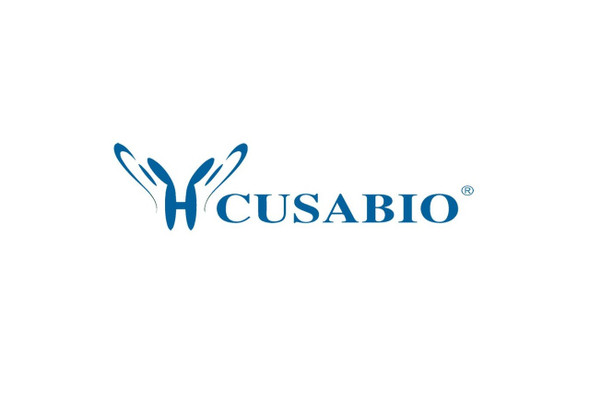Cusabio Mouse Recombinants
Recombinant Mouse Platelet-derived growth factor D (Pdgfd) | CSB-EP852889MO
- SKU:
- CSB-EP852889MO
- Availability:
- 3 - 7 Working Days
Description
Recombinant Mouse Platelet-derived growth factor D (Pdgfd) | CSB-EP852889MO | Cusabio
Alternative Name(s): Spinal cord-derived growth factor B Short name: SCDGF-B Cleaved into the following 2 chains: Platelet-derived growth factor D, latent form Short name: PDGFD latent form Platelet-derived growth factor D, receptor-binding form Short name: PDGFD receptor-binding form
Gene Names: Pdgfd
Research Areas: Others
Organism: Mus musculus (Mouse)
AA Sequence: TPQRASIKALRNANLRRDESNHLTDLYQREENIQVTSNGHVQSPRFPNSYPRNLLLTWWLRSQEKTRIQLSFDHQFGLEEAENDICRYDFVEVEEVSESSTVVRGRWCGHKEIPPRITSRTNQIKITFKSDDYFVAKPGFKIYYSFVEDFQPEAASETNWESVTSSFSGVSYHSPSITDPTLTADALDKTVAEFDTVEDLLKHFNPVSWQDDLENLYLDTPHYRGRSYHDRKSKVDLDRLNDDVKRYSCTPRNHSVNLREELKLTNAVFFPRCLLVQRCGGNCGCGTVNWKSCTCSSGKTVKKYHEVLKFEPGHFKRRGKAKNMALVDIQLDHHERCDCICSSRPPR
Source: E.coli
Tag Info: N-terminal 6xHis-SUMO-tagged
Expression Region: 24-370aa
Sequence Info: Full Length of Mature Protein
MW: 56.2 kDa
Purity: Greater than 90% as determined by SDS-PAGE.
Relevance: Growth factor that plays an essential role in the regulation of embryonic development, cell proliferation, cell migration, survival and chemotaxis. Potent mitogen for cells of mesenchymal origin. Plays an important role in wound healing (By similarity). Has oncogenic potential and can induce tumor formation. Induces macrophage recruitment, increased interstitial pressure, and blood vessel maturation during angiogenesis. Can initiate events that lead to a mesangial proliferative glomerulonephritis, including influx of monocytes and macrophages and production of Extracellular domain matrix.
Reference: "PDGF D, a novel protease-activated growth factor."LaRochelle W.J., Jeffers M., McDonald W.F., Chillakuru R.A., Giese N.A., Lokker N.A., Sullivan C., Boldog F.L., Yang M., Vernet C., Burgess C.E., Fernandez E., Deegler L.L., Rittman B., Shimkets J., Shimkets R.A., Rothberg J.M., Lichenstein H.S.Nat. Cell Biol. 3:517-521(2001)
Storage: The shelf life is related to many factors, storage state, buffer ingredients, storage temperature and the stability of the protein itself. Generally, the shelf life of liquid form is 6 months at -20?/-80?. The shelf life of lyophilized form is 12 months at -20?/-80?.
Notes: Repeated freezing and thawing is not recommended. Store working aliquots at 4? for up to one week.
Function: Growth factor that plays an essential role in the regulation of embryonic development, cell proliferation, cell migration, survival and chemotaxis. Potent mitogen for cells of mesenchymal origin. Plays an important role in wound healing (By similarity). Has oncogenic potential and can induce tumor formation. Induces macrophage recruitment, increased interstitial pressure, and blood vessel maturation during angiogenesis. Can initiate events that lead to a mesangial proliferative glomerulonephritis, including influx of monocytes and macrophages and production of extracellular matrix.
Involvement in disease:
Subcellular Location: Secreted
Protein Families: PDGF/VEGF growth factor family
Tissue Specificity: Expressed at high levels in developing heart, lung, kidney and some muscle derivatives. Moderately expressed in liver, brain and testis. In the kidney, localized to glomerular mesangial cells and vascular smooth muscle cells. Up-regulated in areas of renal fibrosis. In mice with unilateral ureteral obstruction, expressed in interstitial cells at day 4, with an increased to maximal expression at day 14.
Paythway:
Form: Liquid or Lyophilized powder
Buffer: If the delivery form is liquid, the default storage buffer is Tris/PBS-based buffer, 5%-50% glycerol. If the delivery form is lyophilized powder, the buffer before lyophilization is Tris/PBS-based buffer, 6% Trehalose, pH 8.0.
Reconstitution: We recommend that this vial be briefly centrifuged prior to opening to bring the contents to the bottom. Please reconstitute protein in deionized sterile water to a concentration of 0.1-1.0 mg/mL.We recommend to add 5-50% of glycerol (final concentration) and aliquot for long-term storage at -20?/-80?. Our default final concentration of glycerol is 50%. Customers could use it as reference.
Uniprot ID: Q925I7
HGNC Database Link: N/A
UniGene Database Link: UniGene
KEGG Database Link: KEGG
STRING Database Link: STRING
OMIM Database Link: N/A









